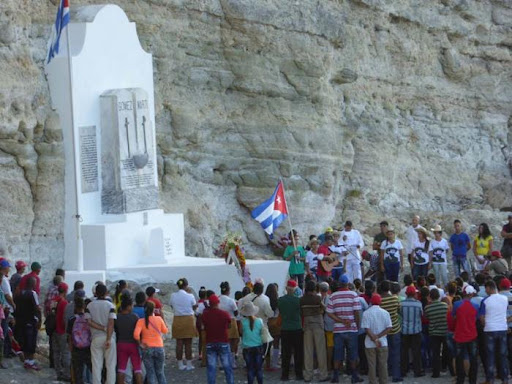 April 11, 1895 marked a key moment in the fight for Cuban independence. On that date, two fundamental figures in Cuban history, José Martí and General Máximo Gómez, disembarked with other patriots at Playita de Cajobabo, in Imías, Guantanamo, to join the armed struggle against the Spanish yoke that had restarted on February 24 of that same year.
April 11, 1895 marked a key moment in the fight for Cuban independence. On that date, two fundamental figures in Cuban history, José Martí and General Máximo Gómez, disembarked with other patriots at Playita de Cajobabo, in Imías, Guantanamo, to join the armed struggle against the Spanish yoke that had restarted on February 24 of that same year.
Martí, the Delegate of the Revolutionary Party, had dedicated much of his life to the purpose of liberating his homeland from colonial rule. He was not only a politician but also a thinker, writer, poet whose work has transcended the boundaries of time.
Gómez was an experienced military man of Dominican origin who had fought in the Ten Years’ War, the first major attempt at Cuban independence that took place between 1868 and 1878. He was known for his strategic skill and his ability to inspire men in battle.
Disembarkation in Cajobabo was not easy. Martí, Gómez and their fellows faced rough seas, which almost cost them their own lives, but their determination was unbreakable and their arrival in Cuba was a powerful symbol of commitment and hope for Cubans who longed for independence.
Once on land, they joined other patriots and began the hard task of organizing the war of independence. Martí would not live to see the fruit of his efforts. He died in combat just over a month later, on May 19, 1895. However, his legacy lived on and was a source of inspiration for the independence cause, as it continues to be today.
The Cajobabo disembark is remembered as an act of bravery and a turning point in Cuban history. The determination of Martí and Gómez and their desire to see Cuba free from colonial oppression continues to be an example of the indomitable spirit that characterizes the Cuban nation.
Trnslated and Edited By Ilia Charon